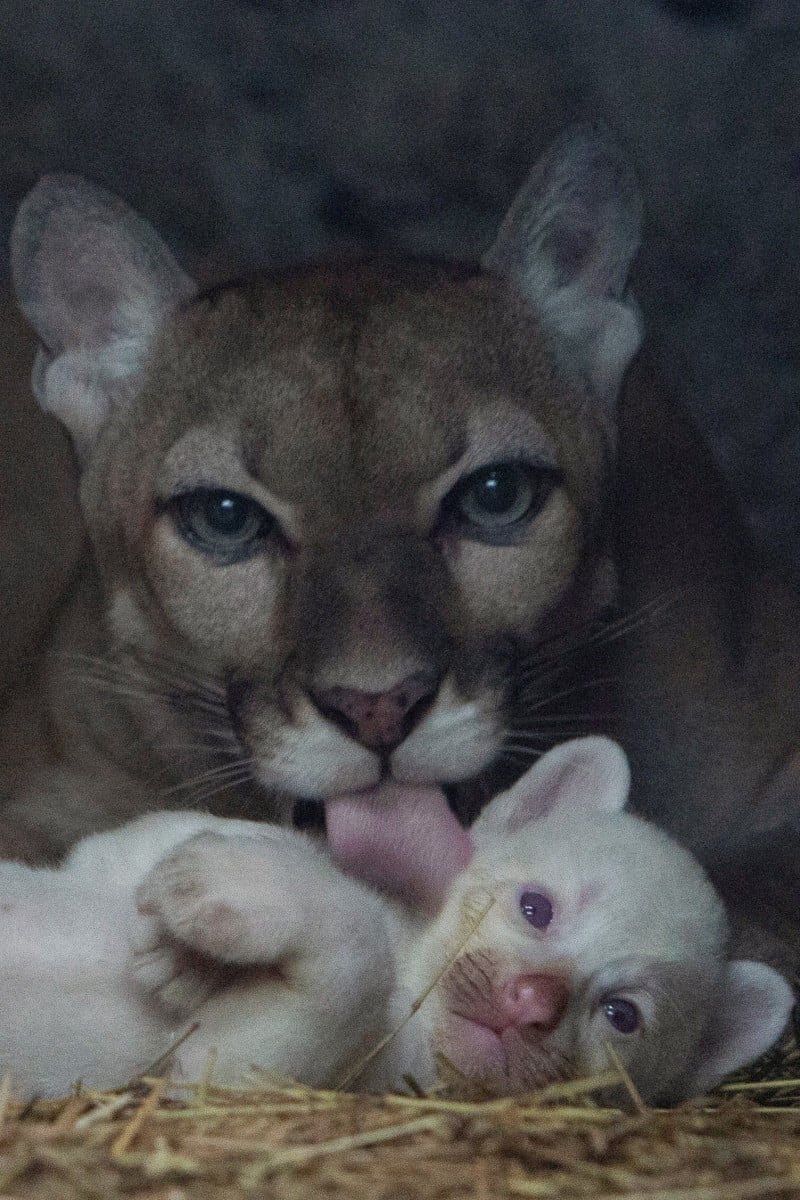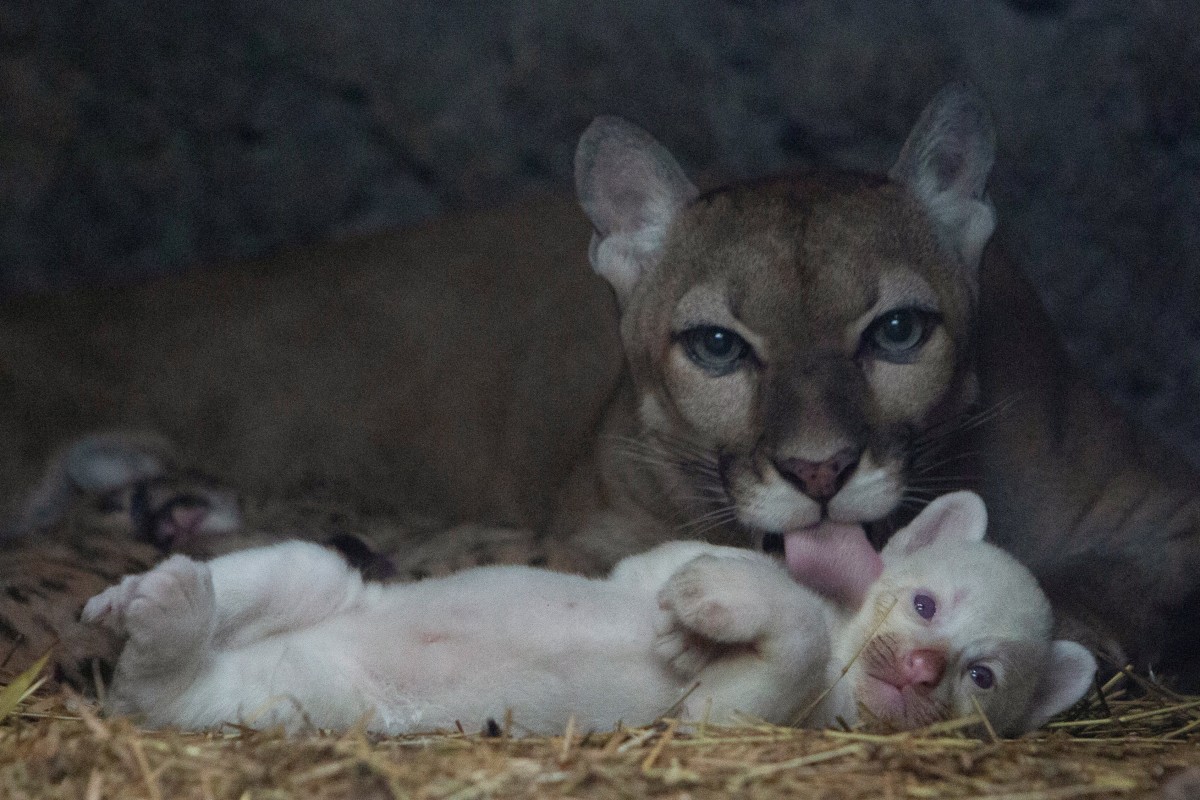
- Month-old cub is happy and healthy, being sheltered from zoo visitors, officials said
- Pumas are usually light brown or reddish with black flecks; genetic mutation that causes white pigmentation is rare among the species
 A puma licks her month-old albino cub, born in captivity, at their enclosure at Thomas Belt Zoo in Juigalpa, Nicaragua on August 22, 2023. Photo: Reuters
A puma licks her month-old albino cub, born in captivity, at their enclosure at Thomas Belt Zoo in Juigalpa, Nicaragua on August 22, 2023. Photo: ReutersA rare specimen of albino puma was born a month ago in a zoo in Nicaragua, where it is still being sheltered from the gaze of visitors, zoo officials said.
“We are taking all measures to be able to keep him as healthy as possible, together with his mother,” veterinarian Carlos Molina from the Thomas Belt Zoo told Agence France-Presse.
“He is healthy, his body is in good condition,” said the vet from the zoo in Juigalpa in Chontales department, about 140 kilometres from the capital Managua.
The fur of common pumas at birth is light brown or reddish with black flecks. The genetic mutation that causes white pigmentation is rare among the species, and there are hardly any documented cases in the world.
“We are happy to have it because you don’t see this very often,” Molina said.
Tehran ‘meowseum’ with Persians and other cats show felines are city’s citizens too
The puma is the second largest cat in the Americas after the jaguar, and the fourth in the world after the tiger and the lion.
Zookeepers have avoided contact with the small albino puma, which is growing up with its mother in a den set up in a fenced enclosure, and hope that within two months the cub will be able to receive veterinary treatment.